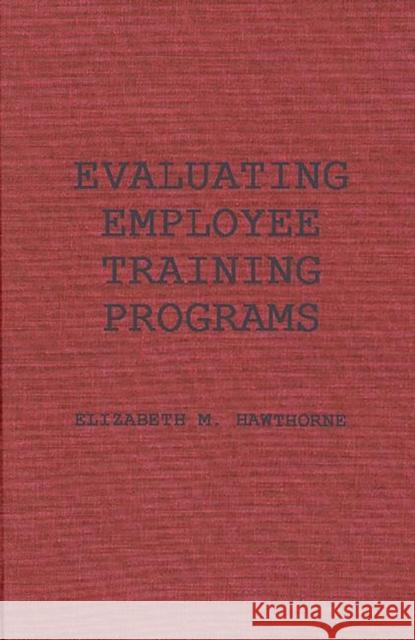Evaluating Employee Training Programs: A Research-Based Guide for Human Resources Managers » książka
Evaluating Employee Training Programs: A Research-Based Guide for Human Resources Managers
ISBN-13: 9780899302423 / Angielski / Twarda / 1987 / 210 str.
Evaluating Employee Training Programs: A Research-Based Guide for Human Resources Managers
ISBN-13: 9780899302423 / Angielski / Twarda / 1987 / 210 str.
(netto: 342,30 VAT: 5%)
Najniższa cena z 30 dni: 355,74
ok. 30 dni roboczych
Dostawa w 2026 r.
Darmowa dostawa!
Using a new theory of evaluation research, which is based on social science and economic theory, Hawthorne describes three evaluation methods: benefit-cost analysis, multiattribute utility technology, and impact evaluation. She illustrates the usefulness of each method by using each to evaluate a forty-hour, week-long training program conducted in a high-technology Fortune 500 company. The author shows how her technique for measuring increases in productivity in terms of monetary benefits can be used. She provides specific guidelines to be used by trainers and management in planning and implementing program evaluations. Through her practical application of these methods the author shows how to use evaluation methods to improve training and enhance its impact. "Business Library Newsletter"
This rigorously researched volume explores evaluation methods that can be used to improve employee training for increased benefits to the employer. Hawthorne establishes a historical context for the development of corporate-sponsored employee training programs and evaluation efforts. She then presents a new theory of evaluation research which is grounded in social science and economic theory, and which offers practitioners of employee training a functional vantage point from which to view program evaluation. She provides specific guidelines which will assist educators in preparing evaluation plans, implementing evaluations, and using evaluation techniques to improve the training and to enhance its impact. The author describes three traditional evaluation techniques--benefit--cost analysis, decision analysis, and impact analysis--and reports on the three methods as applied in a management education program offered by a Fortune 500 company for its supervisory and managerial personnel. Hawthorne's technique for measuring increases in productivity in terms of monetary benefits is employed to factor difficult-to measure benefits into a multiple criteria framework of analysis.











